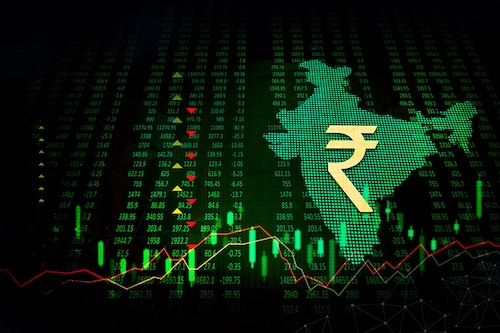India's trade and the Ricardian comparative advantage
Here's where India stands with regard to British economist David Ricardo's comparative advantage model


Global economic growth is expected to show a little uptick in 2023 amidst the frail growth outlook for the upcoming period in major Advanced Economies (AEs) and Emerging Market and Developing Economies (EMDEs), especially after the emergence of the Covid-19 pandemic. The recently released Economic Outlook, June 2023 by the Organisation of Economic Co-operation and Development (OECD) predicted a subdued and slow global economic recovery to 2.89 percent in 2024 from 2.74 percent in 2023. Amongst the EMDEs, India is predicted to outperform its peers by registering a growth rate of 7 percent in 2024 from 6 percent in 2023. Despite this challenging global economic growth scenario, India is also seen as a "bright spot" in the world economy. However, India has been experiencing a declining trend in its economic recovery for the past couple of years. The real growth rate of India"s gross domestic product (GDP) is expected to decelerate further to 6.5 percent in FY 2023-24 from 7.2 percent in FY 2022-23 and 9.1 percent in FY 2021-22, as predicted by the official estimates of RBI and GoI.
Similarly, global trade is also expected to slow down soon. Slowing economic growth in many AEs and EMDEs has the potential to impact the growth rate of global trade volume adversely. According to the Global Trade Outlook and Statistics released by the World Trade Organisation (WTO) on April 5, 2023, the total trade volume registered a growth of 2.7 percent in 2022, while merchandise trade volume is expected to register a growth of 1.7 percent in 2023. Also, it is essential to note that trade in terms of value is significantly impacted by the rising commodity prices in AEs and EMDEs.
In India"s case, a fragile economic growth rate is visible across all four growth engines of the economy—Consumption (C), Investment (I), Government Spending (G) and Net Exports (NX). Exports, one of the important drivers of growth, can impact economic growth favourably as an increase in exports will result in a high level of production and output in the economy. Additionally, it has a vast potential to generate employment which will help provide much-needed support to the worrisome employment situation in India.
It is also important to note that a country"s exports largely depend on the demand elasticities of its goods and services abroad. India is now one of the leading nations among the EMDEs in services exports globally. The revenues generated from services exports increased for India by around 28 percent on a Y-o-Y basis. In contrast, revenues generated from the goods exports increased by approximately 6 percent in FY 2022-23. In this regard, greater attention has to be paid to increasing the share of India"s merchandise exports in total exports. India should strive hard to reap the benefits by exporting low-skilled and labour-intensive manufacturing products in which it has a comparative advantage.
Besides, the services exports should be further boosted to mitigate the impact of the overall trade deficit in the BOP. Despite the stiff competition faced from other EMDEs, especially from China, in manufacturing, transport and other related services, India should emphasise the export of services in sectors such as telecommunication, computer, pharmaceuticals, medical equipments and business services, among others. This will help supplement India"s strength in exporting sophisticated, highly skilled and technology-driven products such as information and communication services, software services and so on. Also, improving the quality of our products, ensuring international standards, and increasing adoption and implementation of the production-linked incentives (PLI) scheme will support boosting our production and exports, which will further help generate employment and achieve sustainable economic growth for India.
The new foreign trade policy (FTP) announced by the Ministry of Commerce, GoI, which has come into effect from April 01, 2023, will provide an important policy framework to achieve India"s medium- and long-term trade targets. Focusing on four pillars envisaged in the new FTP viz. a) Incentives to Remission, b) Export promotion through collaboration: Exporters, States, Districts, Indian missions, c) Ease of doing business, reduction in transaction cost and e-initiatives and d) Emerging Areas – Ecommerce Developing Districts as Export Hubs and Streamlining SCOMET policy will undoubtedly help achieve the desired objectives amidst the challenging global trade prospects for India.
The outlook for international trade is expected to be bleak in the ensuing period due to several factors, such as lack of global demand and uncertain economic growth prospects due to lingering aftershocks of the Covid-19 pandemic, disruption in global trade and supply chain management caused by the war between Russia and Ukraine and monetary policy tightening in many economies the world over among others. Against this backdrop, it would be beneficial to delve deeper into the theory of comparative advantage developed by British economist David Ricardo in 1817 and subsequent empirical studies in international trade to adopt pragmatic and well-calibrated policy decisions for achieving India"s $2 trillion export dream by 2030.
The author"s views are personal.
Chinmay Joshi, Research Associate, Finance and Economics, Bhavan"s SPJIMR
First Published: Aug 01, 2023, 11:50
Subscribe Now